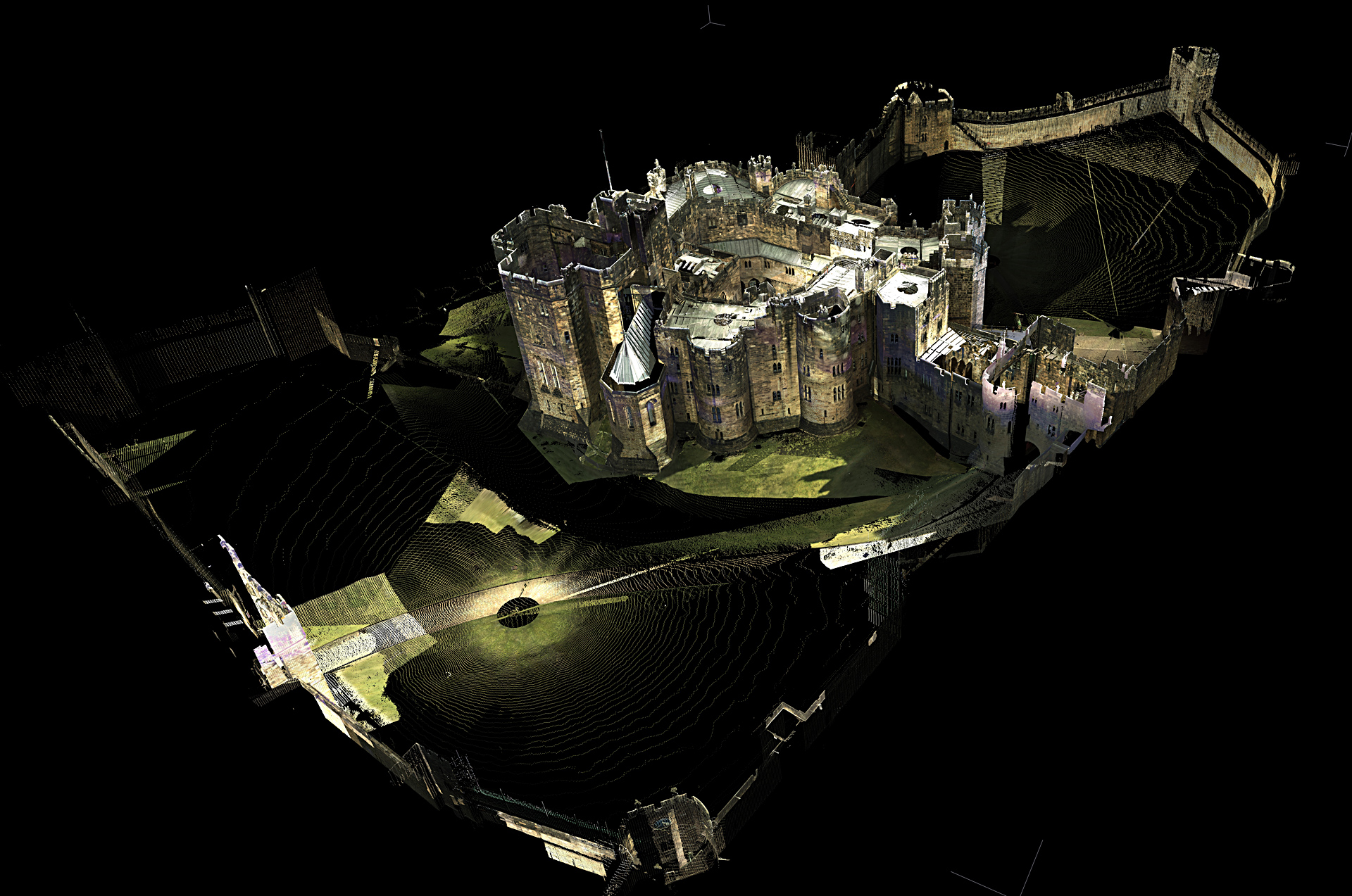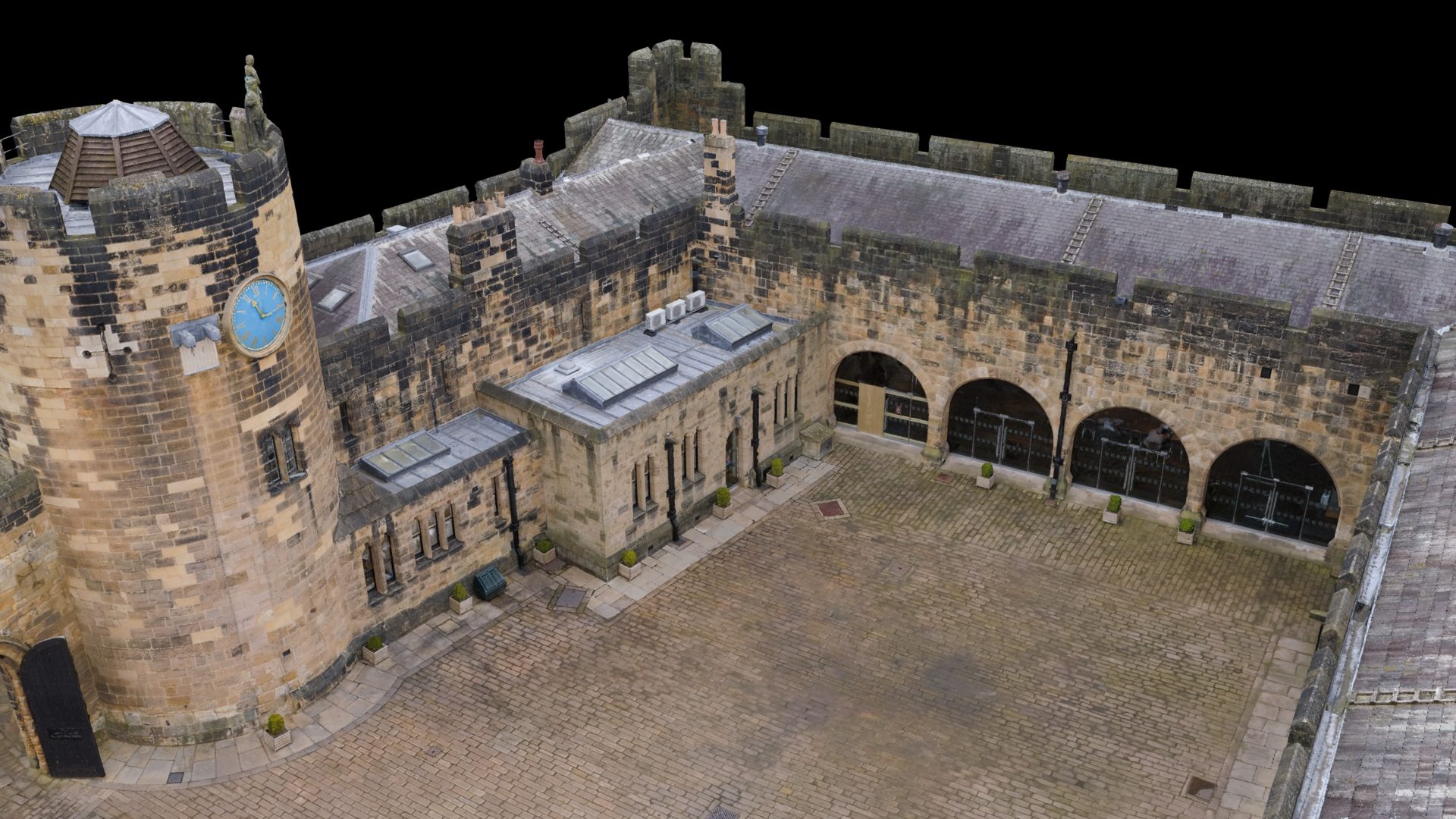

Alnwick castle is one of Britain’s most iconic castles and is the second largest inhabited castle in the country the first being Windsor Castle.
The castle has seen many renovations over the centuries and is still being renovated to this day.
Luminous have been commissioned to aid Northumberland Estates with the on-going repairs and restoration of the castle.

Luminous have worked with the estates department over many years.
Originally the castle was scanned in 2014 using terrestrial laser scanning. However for the latest update Luminous opted to swicth to using a drone and photogrammetry to produce scaled high resolution orthographic images.
All of the drone data was processed in Reality Capture and delivered on a phased basis.
Once all phases have been complete the full data set was brought together to produce a model for the whole site.
- 12,471 individual drone images
- Registered in 13 individual registrations
- Exported as individual components
- All components imported into a new project

Processing time for complete model
- Aligning and merging all components = 4hrs
- Time to mesh total registration = 24hrs with a count of 2.5 billion tris using approximately 600gb of space on the C Drive.
- Time to unwrap the mesh = 30mins
- Time to texture = 2hrs


